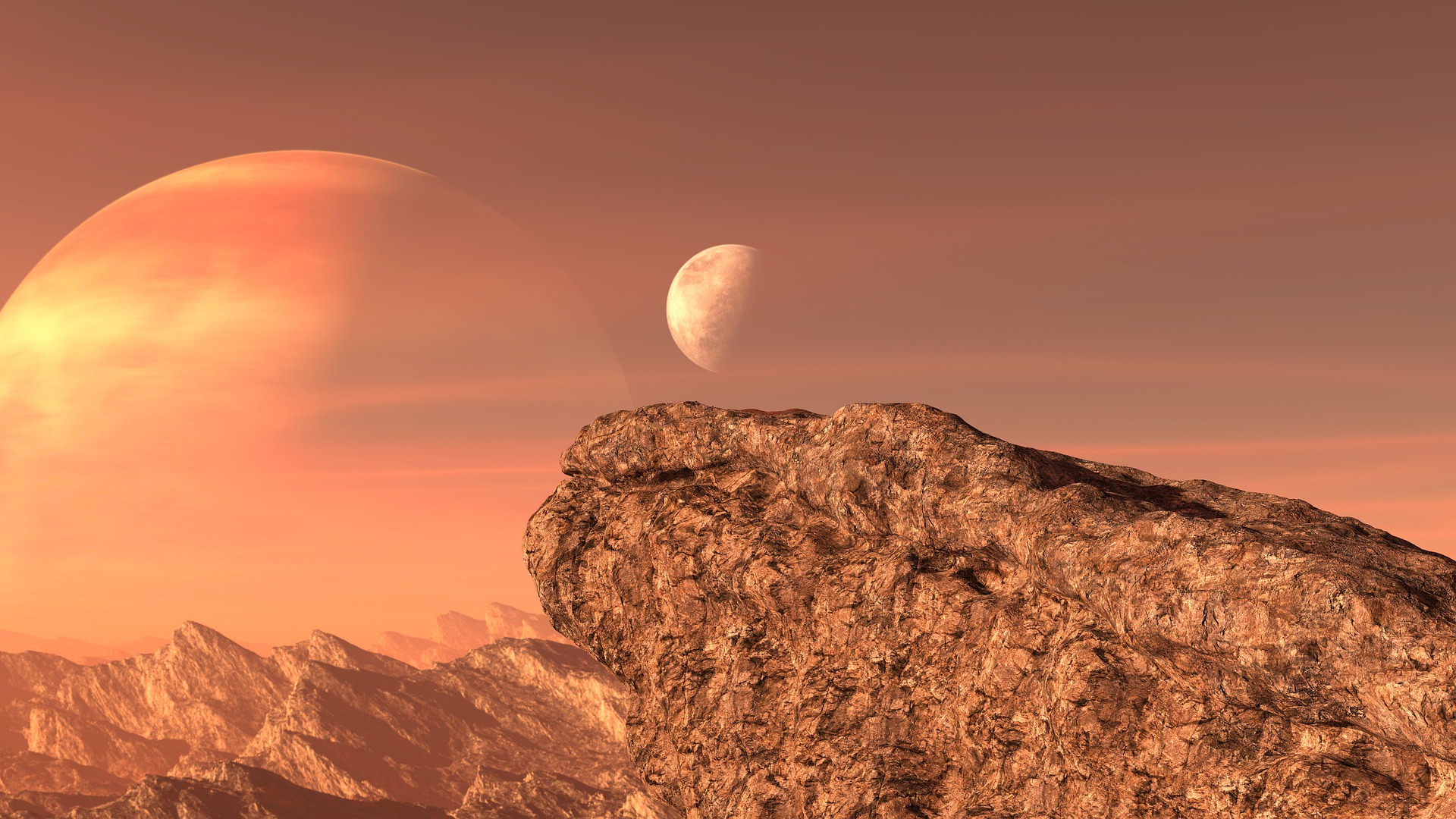Space mission ExoMars2016, which may bring us closer to finding extraterrestrial life, entered its decisive phase as the lander has separated from the orbiter. The lander is approaching the surface of Mars on a ballistic trajectory while the orbiter is movinDodaj obrazg towards its target orbit. The grand finale will come on Wednesday. Updates published by the European Space Agency are followed closely by space enthusiasts, media around the world, and representatives of Polish companies and institutions involved in the project.
The ExoMars2016 probe, a joint project of the European Space Agency and its Russian counterpart, Roskosmos, which has been traveling through the Solar System since March, split into two parts on Sunday, 16 October. The Schiaparelli EDM (Entry, Descent and Landing Demonstrator Module) lander is tasked with safely landing on the planet’s surface and testing several technologies for future manned missions. Additionally, it will perform several meteorological measurements. The lander’s mission on Mars will last several days until its batteries run out of power.
The Trace Gas Orbiter (TGO) has a different set of tasks. After reaching its target orbit around Mars, it will act as its artificial satellite measuring the presence and distribution of gases present in the Martian atmosphere in trace amounts that may be indicative of the current or past presence of life on the Red Planet.
“Methane is of particular interest as it may be a product of geological processes, but its presence may also attest to biological processes occurring under the planet’s surface,” said Grzegorz Brona, PhD, President of the Management Board of Creotech Instruments S.A., a company involved in the project. “TGO will also analyze data on the presence of water vapor, nitrogen dioxide and acetylene in the atmosphere. The orbiter will also act as a data relay for communications between the lander and Earth,” added Brona.
The lander separation procedure commenced Sunday at 1.25 p.m. Polish time but did not go off without a hitch.
“A few minutes after 5 p.m., ESA announced that the separation procedure was successful, and the TGO orbiter reported back to Earth that the onboard systems were operating nominally but did not pass any telemetry data,” said Jacek Kosiec, head of the space program at Creotech Instruments S.A. “The European Space Agency started investigating the causes of this anomaly. Fortunately, after almost two hours, full communication with the orbiter was restored, and the telemetry signal was picked up by ESA’s tracking station in Malargüe, Argentina.”
According to the schedule, next Wednesday, the orbiter will reach its target orbit and start taking measurements. The Schiaparelli lander will touch down on the surface of the Red Planet on the same day.
Polish involvement in ExoMars2016 mission
The Space Research Center of the Polish Academy of Sciences (PAN) was a member of the consortium responsible for building the TGO orbiter and was tasked with designing and manufacturing the power supply module for CaSSIS, a specialized camera that will take high-resolution images of the Martian surface. The camera will photograph rock formations that scientists suspect could emit trace amounts of gases. Other instruments onboard the orbiter, NOMAD and ACS, will use the camera images to identify gas emissions sources.
Creotech Instruments, the leader of the Polish space sector, commissioned by the Space Research Center of the Polish Academy of Sciences, assembled elements of the CaSSiS camera’s power supply system. Vigo System S.A. from Ożarów Mazowiecki, which produced infrared detectors for the Schiaparelli lander, is also involved in the mission.
“We are obviously very excited,” candidly admitted Grzegorz Brona. “We already know that we have done our part of the work flawlessly because the CaSSIS camera had already taken several test photos that were sent to Earth during the probe’s several month-long journey towards Mars. However, it is a very complicated mission, and there are many more things that can go wrong. We are keeping our fingers crossed for final success,” added Brona.
According to the schedule, the TGO orbiter will reach its target orbit of Mars on Wednesday at 4.42 p.m. Polish time. At precisely the same time, the Schiaparelli lander will enter the Red Planet’s atmosphere and is expected to touch down on the Martian surface six minutes later at 4.48 p.m.

 Subscribe to receive latest news:
Subscribe to receive latest news: